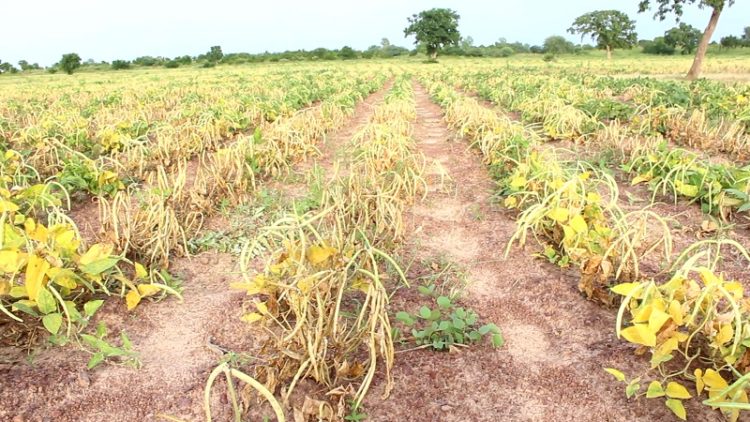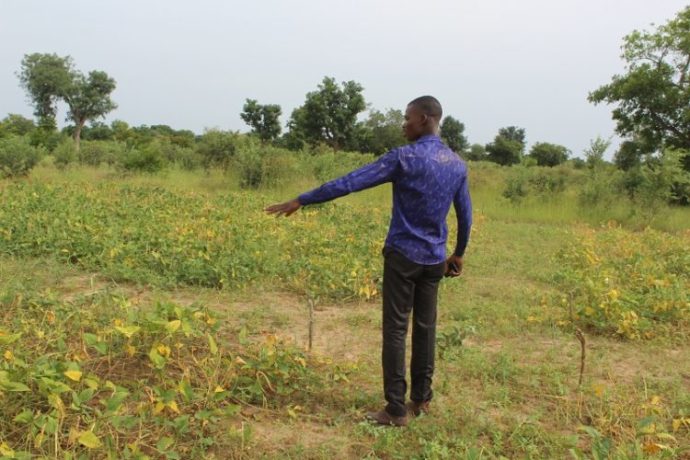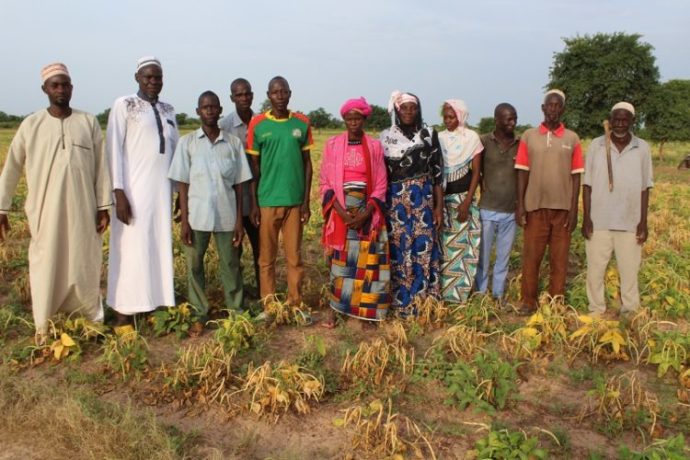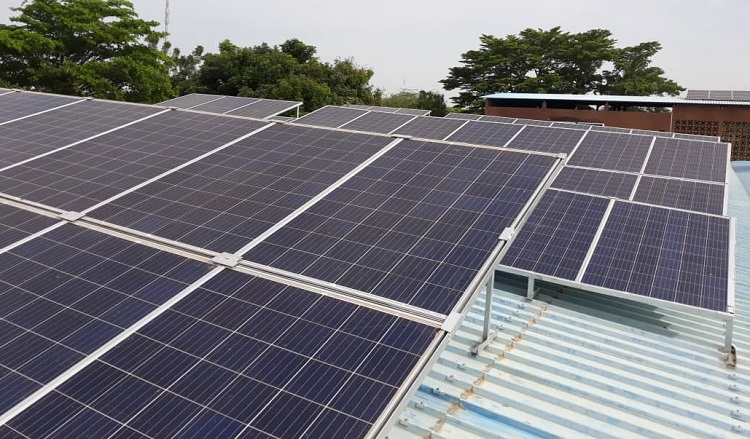Zondoma Province: When research boosts cowpea production

Cowpea, Vigna unguiculata, is the major legume in Burkina Faso. Generally adapted to the agro-ecological conditions of the West African savannas, cowpea is produced in Burkina Faso in all regions in association with cereals (95%) and as a pure crop (5% of areas and 9% of volumes produced). Its cultivation has considerable economic, nutritional and agronomic benefits. The cowpea sector is one of the six priority sectors of the State. Despite its wide adaptation and importance, cowpea productivity is generally very low due to numerous biotic and abiotic constraints. The main constraints in cowpea production include: insect pests (aphids, thrips, sucking bites, pod borer and bruch), diseases (bacterial, viral and fungal), parasitic plants (Striga and alectra), drought and agricultural practices. Fortunately, research has made many advances and thanks to biotechnology, improved varieties capable of overcoming most of these constraints are made available to producers, thus opening up great prospects for the sector.
Boussou, 40 km from Gourcy. We are in the province of Zondoma in the Northern Region. We have an appointment with Boukaré Compaoré, a model cowpea producer. On both sides of the track which leads us in this rural commune, vast fields of various speculations let us observe with a beautiful part to the cowpea. “Even in the millet fields, the cowpea is also associated”, our guide whispers to us. After almost an hour’s drive, we finally arrive in Boussou.
After a brief moment of exchange, time for a guided tour in the vast field of Boukaré Compaoré. This farmer has made the production of improved cowpea varieties his preference. « Here there is no more place for the traditional cowpea, » he tells us. Given his « rich experience » with improved varieties, he was chosen by the Institute of Environment and Agricultural Research (INERA) to experiment with new lines of cowpeas derived from biotechnology.

On a 5-ha portion of his farm, a plot the size of a soccer field is dedicated to lineage demonstration tests. “INERA has provided us with pre-basic seed (high-purity seeds produced by research) for us to experiment with. Alongside each new line, we juxtapose a control plot of Komcallé or Tilgré, which are improved varieties that we already know« , explains the owner.
“After maturation, we try to characterize these new lines (their yield, cycle length, seed texture, crawling, semi-ramped or erect pattern, etc.). Once approved, they will be integrated into the variety chain”, says the provincial director of agriculture and hydro-agricultural development in Zondoma, Kiswendsida Nicodème Zoungrana.
To the Toubyengo seed sole
On our way back from Boussou, we stop in Toubyengo, a town halfway between Boussou and Gourcy. In this locality, the Union of Seed Producers of Zondoma has a 30-ha seed sole where it produces certified seed (seed from basic seed for production, editor’s note) of Komcallé, a 60-day early cowpea variety resulting from research. An average of 75 tons of seed is produced each year by this union, which resells it to farmers who produce for consumption or trade.
Read also👉 Pulses in Burkina Faso: Discovering new species in experimentation at Kamboinsé
According to the president of the Union of Seed Producers of Zondoma, El hadj Ahamadou Kenoré, the introduction of varieties derived from biotechnology has greatly boosted the performance of cowpea producers in the province.
“Since the improved seeds have been produced, we realize that the yield of producers has increased considerably. Compared to traditional varieties, whose yield is dependent on the vagaries of the climate, these new varieties are resistant to several constraints. All the farmers who buy from the union always give us a positive feedback on the quality of the improved seeds we make available to them”, he tells us.
Good organization of the actors…
If cowpea is successful in Zondoma, it owes it to the good organization of the actors in the chain. Indeed, the producers of this province are organized in cooperatives, anything which facilitates their framing, according to the provincial director in charge of the agriculture and the hydro-agricultural installations of Zondoma.
« The actors are very well organized here. We have an ambrella organisation at the provincial level with branches at the department and village levels. This structure mobilizes about fifty seed producers, all speculations combined, but cowpea is the most produced seed. Each year, we have an average production of 150 tons of seeds with 75 tons for cowpea », explains Kiswendsida Nicodème Zoungrana.

In this province, farmers have understood that seed quality directly influences production performance. Therefore, it is from seed producers that farmers who produce for consumption get the seed certified by INERA. For consumption production, the province registers an average of 30,000 tons of cowpeas each year.
“Zondoma is the smallest province in the northern region. But considering the quantity of cowpeas that comes out, we are among the first at the national level”, says the provincial director in charge of agriculture and hydro-agricultural developments in Zondoma.
(Audio) – Cowpea production in Zandoma: Interview with the Provincial Director in charge of Agriculture
https://soundcloud.com/burkina24-radio/cowpea-sector-state-of-production-in-zondoma
According to the president of the provincial union of simplified cowpea production cooperatives in Zondoma, Abdoulaye Mandé, “it is thanks to the tandem between the union of seed producers and the simplified cowpea production cooperatives that cowpea production has taken off in Zondoma« .
The Zondoma, INERA’s antechamber
Beyond the enthusiasm of producers for cowpeas, making this legume the legendary speculation in Zondoma and that since the Eighties, it should be recognized that this culture owes its success to research. Zondoma is in fact a province of predilection for the selections and demonstrations of new varieties of cowpea released from the laboratory of genetics and plant biotechnology of the Institute of Environment and Agricultural Research (INERA).
This province has also benefited from an INERA project called TL3 (Tropical Legume Phase III) which is a multi-stakeholder platform bringing together direct actors (producers-processors, traders), support structures (administration, technicians, banking institutions and research).
After Zondoma, return to Ouagadougou. At the Center for Environmental and Agricultural Research and Training (CREAF) in Kamboinsé, in the northern suburbs of the capital. The team leader of the Cowpea Breeding Unit, Dr. Benoît Joseph Batieno, is busy at the Plant Genetics and Biotechnology Laboratory. This is where all the biotechnological work is done. According to him, since 1978 Burkinabe researchers have been interested in cowpeas and have developed about forty varieties.
“Cowpea is considered one of the plants that is somewhat drought tolerant. But today with climate change affecting rainfall, the length of pockets of drought is becoming more and more important. Cowpea also suffers these pockets of drought, especially at the end of the cycle.
So, what we’re doing today is developing varieties that are adapted, that have a short cycle around 60 to 70 days and that can, despite pockets of drought, resist and produce something for the grower while being resistant to pests. That’s what drove us to improve cowpea because all these pests, the more climate change comes together to counter our production”, explains the researcher.
Thanks to the improved varieties, cowpea producers have significantly increased their yield.
Thanks to this high-tech laboratory, researchers are able to shorten the variety selection cycle. « In the old days, we used to do the selection blindly and the field told us the truth. You can select and then at the end you go and put it in the field and there’s nothing interesting in it. You could do 12 years and, in the end, you don’t have a variety to popularize, » admits Dr. Batieno.
“But today, he explains, to make sure you have something to spread, you follow the genes of interest through markers that we use in the laboratory to follow the evolution of our plants. But this, instead of doing 12 years, can allow us to release a variety in 6 years. And to shorten it even more, instead of waiting a year to go forward, we can use greenhouses or irrigation that allow us to make at most 4 seasons in a year. With this process, normally in 4 years, we can release a variety”.
(Video): The stages of selection of new cowpea varieties at INERA
Burkina 24
In Zondoma, thanks to the improved varieties, cowpea producers have significantly increased their yield, thus improving their living conditions.
“In any case, we are very happy here. We thank God and INERA for the extension of the improved varieties. In truth, the famine that our ancestors and parents suffered, thanks to the improved varieties, we will not experience this famine. We will overcome food insecurity”, rejoices the President of the Union of Seed Producers of Zondoma, El Hadj Ahamadou Kenoré, who invites farmers to get involved in the production of cowpeas, in particular by using improved varieties of seed. “This is the solution to poverty and food insecurity”, he adds.
(Video) Reaction of cowpea producers: « In Zondoma, our cocoa is cowpea »
Burkina 24
Dr. Benoît Joseph Batieno believes that « the cowpea industry has a bright future ahead of it and we are doing everything we can to make it happen. And he concludes: « we are doing everything we can because, whatever people say, we try to mobilize a lot of funds every year so that we don’t remain on the sidelines in terms of improvement and solving the producers’ problems ».
Maxime KABORE
Burkina 24
Nous tenons à vous exprimer notre gratitude pour l'intérêt que vous portez à notre média. Vous pouvez désormais suivre notre chaîne WhatsApp en cliquant sur :  Suivre la chaine
Suivre la chaine
Restez connectés pour toutes les dernières informations !

Restez connectés pour toutes les dernières informations !






